Don't wanna be here? Send us removal request.
Text
Assam HS Result 2023: AHSEC Class 12 results are unavailable on ahsec.assam.gov.in today; an update on the new date is provided.

Assam 12th Result 2023: AHSEC HS results will be available at ahsec.assam.gov.in and resultsassam.nic.in. Pass percentage trends, and steps to check marks.
The Assam Higher Secondary Education Council (AHSEC) has informed that the Assam Class 12th results would not be released today, May 27. According to a board official, the Assam board's HS 12th result will not be released until May 31. Students who attended the higher secondary (Assam HS 12th) tests will be able to check their marks on ahsec.assam.gov.in and resultsassam.nic.in after the results are released. The AHSEC Assam HS 12th Result 2023 is expected in the first week of June. When the results of the AHSEC Class 12th exams are issued, they will be available on the AHSEC official website at ahsec.assam.gov.in. This year around 2 lakh candidates have appeared for AHSEC Class 12 – Science, Commerce and Arts stream examination. The Assam Class 12 final examination was held in two shifts from February 20 to March 20, 2023. The morning shift was from 9 a.m. to 12 p.m., while the evening shift was from 1:30 p.m. to 4:30 p.m. Follow the blog for the most recent information on the result date, direct link, pass %, and other details. How to Check Assam High School Result 2023 Students can get the AHSEC 12th provisional mark sheet 2023 by following the methods described below. Visit the AHSEC website at ahsec.assam.gov.in or resultsassam.nic.in. - Download the 'Assam HS result 2023' link. - In the space provided, enter the roll number. - The Assam HS result 2023 will be displayed on the screen. - Checkmarks, qualifying status, and download for future use are all available. How to Get Assam 12th Result By SMS - The format for checking HS results 2023 by SMS application is provided below. - Open the SMS app on your mobile device. - Type ASSAM12 - Send the SMS to the number 56263. - The AHSEC 12th result 2023 will be delivered to your cell phone. To read more blogs – Click Here Read the full article
#2023hslcresultsdatenews#assamhs2023resultsdate#assamhslcresult2023#assamhslcresult2023date#assamhslcresults2023#hs2023result#hs2023resultdate#hs2023resultnews#hsresult2023#hsresult2023news#hslc2023result#hslc2023resultdate#hslc2023resultnews#hslcresult2023#hslcresult2023assam#hslcresult2023assamdate#hslcresultdate2023#hslcresults2023#hslcresultsdate2023#sebahslcresult2023
0 notes
Text
Kamakhya Temple
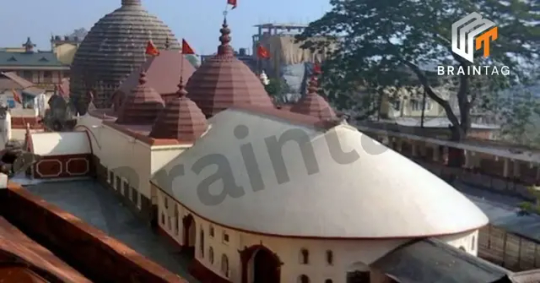
Welcome to the magical world of the beautiful Hindu temple Kamakhya Temple, situated atop Nilachal Hill in Guwahati, Assam, India. This magnificent temple is not just a work of art in architecture but also has great religious importance. The temple, which is devoted to the mighty goddess Kamakhya, attracts tourists from all over the world who are looking for blessings, spiritual solace, and a better understanding of Indian mythology. Join us on a virtual journey as we explore the famous Kamakhya Temple's exciting past, unique rituals, and cultural attractions. Historical Significance and Legends: The Kamakhya Temple is a memorial to India's rich history and long-standing customs. The temple has a long history that is steeped in tales and legends. The Kamakhya Temple, a significant religious site in Hindu mythology, is associated with several legends, including one involving Goddess Kamakhya, Lord Shiva, Goddess Sati, and King Daksha. Goddess Sati chose to go to the yagna that her father, Prajapati Daksha, had planned in defiance of Lord Shiva's order to stay away from it. But Daksha had intentionally not invited either Goddess Sati or Lord Shiva. After reaching the sacred grounds of the Kamakhya Temple, Sati's father Daksha started to insult and degrade Lord Shiva in front of all the inhabitants of Tribhuvan. Overwhelmed by the humiliation faced by her beloved husband, Sati tragically took her own life at the spot of the Yagna. Lord Shiva got angry and furious when he heard about this terrible incident. He started the Tandava, a furious dance of heavenly fury, while somberly carrying Sati's dead body on his shoulders. Lord Vishnu tried to calm Lord Shiva, but his efforts were unsuccessful. Finally, Lord Vishnu used his Sudarshan Chakra to sever Sati's body into 51 parts. The locations of each body part are now known as Shakti Peethas. The reproductive organ, known as the "yoni," of Goddess Satl fell in Kamakhya, also known as Kubjika Pitha. It wasn't discovered until Lord Brahma's curse on Kamadeva (God of Love) drove him to look for it. After following this Peetha, he reclaimed his rupa (beauty). Since Kamadeva regained his excellent looks, the area has been given the name Kamarupa (Kamrup), and the god is known as Kamakhya, or the one who is revered by the Kama. Architectural Marvels Visitors are enchanted by the Kamakhya Temple's magnificent architecture. The temple, which combines medieval and ancient architectural forms, is a stunning example of fine craftsmanship. The temple's unique appearance, highlighted by a shikhara in the form of a dome and beautifully sculpted stone walls, underlines its historical and cultural significance. Intricate carvings and sculptures representing numerous deities and mythological figures enhance the interiors. The absence of an idol of the presiding goddess, Kamakhya, further adds to the enigmatic aura of the temple. Spiritual Practices and Rituals Kamakhya Temple is renowned for its distinct rituals and practices, attracting seekers of spiritual enlightenment. The temple serves as a central location for the tantric cult. Where followers and practitioners can receive blessings and perform ancient rituals. The Ambubachi Mela, which is held every year during the monsoon season, is one of the most revered rituals. The temple remains closed for three days as devotees believe that the goddess undergoes her annual menstrual cycle during this time. On the fourth day, the temple reopens, and thousands gather to seek blessings and take part in the festivities. Festivals and Celebrations The vibrant festivities at Kamakhya Temple make it a popular destination for tourists. Apart from the Ambubachi Mela, a number of other celebrations attract both tourists and believers. The Durga Puja, celebrated with great fervor, is a grand affair, during which the temple premises are adorned with dazzling lights and colorful decorations. Navaratri, the nine-night festival dedicated to the goddess Durga, witnesses devotional performances, traditional music, and dance forms like Bihu. Significance for Pilgrims and Devotees For tourists and believers, Kamakhya Temple is of great significance. Those who come to the temple hoping to receive the goddess Kamakhya's blessings are said to have their wishes fulfilled. It is a sacred site for devotees following the Shakti cult, and many believe that visiting the temple can cleanse them of their sins and grant spiritual awakening. The peaceful environment of the temple and the wide vista of the Brahmaputra River enhance the spiritual experience and attract visitors from all walks of life. The Kamakhya Temple is evidence of India's rich cultural legacy and its people's devotion. Its historical significance, architectural splendor, and unique rituals make it a must-visit destination for spiritual seekers and curious travelers. The Kamakhya Temple provides an extraordinary journey into the world of divinity, no matter whether you are drawn to the temple for its mythical history or just to admire its architectural magnificence. So make the journey to this wonderful place and allow the mysterious atmosphere of Kamakhya Temple to wrap your senses, giving you a richer appreciation of Indian spirituality. FAQ About Kamakhya temple Q: why kamakhya temple is famous? Ans: Hindu mythology provides the Kamakhya Temple with an immense amount of religious and cultural significance. It is believed to be the place where the reproductive organ of the Hindu goddess Sati fell during Lord Shiva's tandava (dance of destruction). The temple is dedicated to the goddess Kamakhya, who is revered as the embodiment of feminine power and fertility. Q: How can I reach Kamakhya Temple? Ans: Kamakhya Temple is located in Guwahati, Assam, India. The temple is easily reachable via a number of different ways of transportation. The nearest airport is Lokpriya Gopinath Bordoloi International Airport in Guwahati, which is well-connected to major cities in India. To get to the temple atop Nilachal Hill, you can either take a taxi or a public bus from the airport or Guwahati Railway Station. Q: Are there any specific dress code or entry restrictions at Kamakhya Temple? Ans: The Kamakhya Temple does have some entry requirements and clothing codes. Men and women must both wear modest clothing that covers their shoulders and knees. It is best to stay away from wearing outfits that are too tight or exposing. Additionally, leather items, including belts and wallets, are not allowed inside the temple premises. Q: Can non-Hindus visit Kamakhya Temple? Ans: Yes, non-Hindus are welcome to enter Kamakhya Temple and take in its meditative atmosphere. Visitors from all religions are welcome to appreciate the temple's cultural and architectural beauty. However, it is important to respect the religious sentiments and follow the customs and traditions observed within the temple premises. Q: Are there any specific rituals or festivals to witness at Kamakhya Temple? Ans: Kamakhya Temple is known for its unique rituals and festivals. The Ambubachi Mela, which is held every year during the monsoon season, is one of the most important occasions. The temple is closed for three days during this period since it is thought that the goddess Kamakhya is having her period. On the fourth day, the temple reopens, and devotees gather to seek blessings and witness the festivities. Other important festivals celebrated at the temple include Durga Puja and Navaratri, which showcase elaborate rituals, devotional performances, and cultural programs. Q: kamakhya temple near railway station Ans: The Kamakhya Temple in Guwahati, Assam, India is located easily close to various railway stations. The distance between the Kamakhya Temple and the closest railway station is about 2.2 kilometers, at (KYQ) Kamakhya (Train Frequency 209). (GHY) Guwahati (Train Frequency 255) is another close-by station, located 4.37 kilometers away. If you're traveling from a slightly farther location, you can consider stations such as (DGU) Digaru (Train Frequency 14), which is 23.67 kilometers away, or (RNY) Rangiya Junction (Train Frequency 135), approximately 32.69 kilometers away. Other stations that are quite close to the Kamakhya Temple are (NLV) Nalbari (Train Frequency 42), which is located 41.96 kilometers away; (JID) Jagi Road (Train Frequency 94), which is located 48.58 kilometers away; and (KTCH) Kaithalkuchi (Train Frequency 0), which is located 49.09 kilometers away. To read more blogs – Click Here Read the full article
#architectureofhindutemple#christofindia#hindutemple#indiantemple#indiantemples#kaamakhyatempledarshana#kamakhya#kamakhyadevistoryinhindi#kamakhyatemple#kamakhyatemplemystery#kamakhyatempletimings#mostmysterioustemplesofindiainhindi#mysterioustemplesinindia#mysterioustemplesofindia#partsoftemple#temple#templeinindia#templesaroundtheworld#templesofindia#thebestofindia#theranveershowpodcast
1 note
·
View note
Text
Places to visit in gangtok
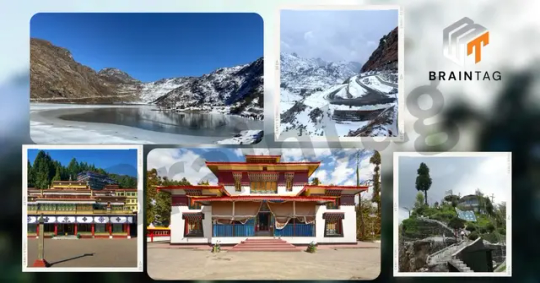
The capital and most populated city of the Indian state of Sikkim is Gangtok, which is also a city and municipality. It serves as the Gangtok District's administrative center. At a height of 1,650 m (5,410 ft), Gangtok is located in the eastern Himalayan range. The 100,000 residents of the city are from a variety of Sikkimese ethnic groups, including Indian Gorkhas, Bhutia, and Lepchas. Gangtok serves as the hub of Sikkim's tourism sector and is located among the higher Himalayan ranges, where the climate is warm and temperate all year round. In the early 1980s, Gangtok became well-known as a Buddhist pilgrimage destination. Due to its outstanding natural beauty and religious significance, it is currently one of Northeast India's most popular cities. The best places to visit in Gangtok should be explored over the course of at least 10 days if you are planning a vacation there.
If you're looking for places to visit in Gangtok here are some top recommendations.
Tsomgo Lake Tsomgo Lake should be at the top of your list if you're looking for places to visit in Gangtok forever. Situated at an altitude of 12,400 ft., this high-altitude lake nestled amidst majestic mountains offers a breathtaking sight. Visitors are amazed by Tsomgo Lake's ever-changing colors. That change with the seasons since it is nourished by the melting snow from the nearby peaks. When the lake freezes over in the winter, it forms a beautiful frozen landscape, and when it blooms in the summer, the area is decorated with colorful flowers. Buddhist monks supposedly used to study the lake's colors in order to predict the future. A visit to Tsomgo Lake is a feast for the senses, where you can take in the awe-inspiring views, embark on a Yak or mule ride, and bask in the tranquility of nature. The breathtaking beauty of this glacial lake will capture the attention of both nature lovers and photographers. Tsomgo Lake is a must-see addition to any exploration of Gangtok's unique attractions. It offers ethereal appeal and unmatched beauty. Distance from Gangtok: 40 km Travel advice: Both Indians and foreign visitors must have a valid permit in order to access the lake. Nathula Pass Nathula Pass is a must-visit destination when exploring places to visit in Gangtok. A haven for nature lovers, this mountain pass offers stunning views of the majestic Himalayan peaks from its elevation of 14,140 feet. To visit this restricted region, tourists must have a special permit, so make sure to make such arrangements in advance. Don't miss the chance to see the respected shrine known as the Baba Harbhajan Singh Mandir, which is awe-inspiring and significant in history. Nathula Pass, which was once a part of the old Silk Road connecting Tibet and India, is blessed with beautiful natural scenery. Plan your path carefully when driving across its treacherous slopes. Which rise to a height of 14,140 feet, as the road is frequently closed due to severe snowfall. Make plans to visit Gangtok to experience this exciting vacation. Distance from Gangtok: 56 km Travel advice: The pass is only open to Indian tourists with a proper permit. Rumtek Monastery Discover the enchanting beauty of Gangtok with its captivating attractions and immerse yourself in tranquility at Rumtek Monastery, also known as Dharma Chakra. This well-known Buddhist site offers a path to peaceful tranquillity while nestled among lush green landscapes and foggy mountains. With its picturesque vistas and breathtaking topography, Rumtek Monastery is a paradise of peace, drawing devotees and nature lovers from around the globe. As one of the most important and popular religious sites in Gangtok, it pays homage to the Gyalwa Karmapa of the Kagyu sect of Buddhism. This magnificent monastery offers breathtaking views of the surrounding hills and is only 23 kilometers from Gangtok. Admire the three-story building's exquisite architecture, deft carvings, and breathtaking murals. Discover the rich library of the monastery and take in some ancient Buddhist rituals. A visit to Rumtek Monastery is a must for those seeking solace, eternal peace, and immersion into Tibetan culture and Buddhism. Distance from Gangtok: 35 km Travel advice: The monastery is under the jurisdiction of the Indo-Tibetan Border Police, so keep your identification cards on you. Enchey Monastery A must-see attraction and one of the top places to visit in Gangtok is the tranquil Enchey Monastery, which is tucked away in the pine forests. In addition to spectacular architecture, this 200-year-old Buddhist monastery is home to a vibrant cultural history. Its annual Cham dance festival during January/February attracts devotees and tourists alike, offering a mesmerizing spiritual experience. Explore the meticulously decorated prayer rooms filled with exquisite paintings and sculptures. Take in the serene ambiance, and be mesmerized by the expansive vistas of the magnificent Kanchenjunga range. Enchey Monastery, perched on a hill, offers the ideal vantage point to take in Gangtok's attractions. As an integral part of the Nyingma sect of Vajrayana Buddhism, this sacred site carries immense significance. According to legend, after flying from Maenam Hill in south Sikkim, famed tantric Buddhist practitioner Lama Drupthob Karpo, who was also able to fly, blessed the location by building a small gompa. The name "Enchey Monastery" translates to "the solitary temple," reflecting the peaceful seclusion and hermitage established by the monk upon his arrival. Discover Enchey Monastery's spiritual sanctuary and cultural marvels to add to your list of must-see locations in Gangtok. Distance from Gangtok: 3 km Travel advice: Ask for permission from the monastic authorities before taking any pictures, and avoid any activity that disturbs the monastery's sanctity, including talking loudly. Tashi Viewpoint Tashi Viewpoint in Gangtok is the perfect place to go if you're looking for a calm and unpolluted location to spend some quality time. Incredibly beautiful panoramic views of the snow-capped Himalayan peaks, including Mount Kanchenjunga and Mount Siniolchu, can be found at this well-liked tourist destination, which is about 8 kilometers outside of the town. Nature lovers and shutterbugs will be captivated by the picturesque ambiance and the opportunity to witness unforgettable sunrises and sunsets. The viewpoint also provides glimpses of important monasteries like Phodong and Labrang, adding cultural and spiritual significance to the experience. Visitors can take in the quiet ambiance while breathing in the fresh air, sipping cool beverages, and exploring gift shops. With free admission, Tashi Viewpoint is a must-visit destination for those seeking a peaceful respite and stunning views amidst the beauty of Gangtok. Distance from Gangtok: 8 km Travel advice: The months of March to June are perfect for visiting the point because of the good weather and clear, sunny days. Gangtok is a beautiful location that will capture your senses. Learn about its stunning beauty. With its enchanting charm, picturesque landscapes, and rich cultural heritage, Gangtok offers a truly unforgettable experience. Tsomgo Lake's crystal-clear waters mirror the nearby snow-capped mountains as you lose yourself in its calm tranquility. Feel the spiritual aura at Rumtek Monastery, a sacred place that exudes tranquility and peace. Don't miss the opportunity to visit the majestic Nathu La Pass, a gateway to the enchanting Himalayas. Every visitor should make the trip to Gangtok because of its wealth of natural marvels and cultural treasures. Also, Read - Top 7 places to visit in Sikkim FAQ About Gangtok: Question: How to reach Gangtok by train? Answer: Since Gangtok does not have a railway station. You must first travel by train to Siliguri's New Jalpaiguri Junction (116.7 km away from Gangtok), where you must then take a road to get to Gangtok. Question: Suggest some things to do in Gangtok for adventure. Answer: For adventurers, river rafting, paragliding, and trekking are some of the must-do activities in Gangtok. Driving via the Nathu La pass. One of India's most breathtaking motorable highways is another of the most thrilling things to do in Gangtok. Question: What is the best time to visit Gangtok? Answer: The ideal time to travel to Gangtok is in the autumn (the season of October to November). If you want to view the stunning Rhododendron blossoms in full bloom, you may also schedule a trip to Gangtok during the spring, which lasts from March to June. Question: Where to shop in Gangtok Sikkim? Answer: Lal Bazaar, Gangtok's most well-known shopping area, is where you can purchase churpi, yak cheese, Nepalese kukris, bamboo and cane baskets, and Tibetan prayer flags. In Gangtok, MG Marg is also a good place to shop in Gangtok. Question: How to reach Gangtok by flight Answer: Gangtok does not have an airport. However, if you prefer to fly, you can do so to Bagdogra Airport (122.9 km away from Gangtok) and then take a taxi from there to Gangtok. The drive is expected to take four to five hours. Question: What modes of transport are available to get around Gangtok essay? Answer: Taking a taxi is the easiest way to get from your Gangtok hotels to the city's various tourist sites. These are offered both privately and in shared form. To read more blogs – Click Here Read the full article
0 notes
Text
Orange cap holder lists in ipl 2023
Orange cap holder lists in ipl 2023: With its exciting matches and outstanding performances, the Indian Premier League (IPL) has captured the attention of cricket fans all around the world. The Orange Cap, given to the player with the most runs scored during the season, is one of the most prestigious awards in the competition. Let's take a closer look at the players who have dominated the batting rankings and worn the coveted Orange Cap as the IPL 2023 takes shape.

The IPL's top run scorer receives the Orange Cap honor, and from the start of the season to the conclusion, different players carry the cap. On many occasions, the team that didn't compete in the championship game or even make the playoffs ended up with the final Orange Cap winner. The IPL is so unpredictable, which makes it both exciting and depressing at times. Here, you can view a year-by-year breakdown of all the IPL Orange Cap winners. All-Time Orange cap holder lists in ipl

IPL Orange Cap 2023: FAQs Who holds the orange cap in the 2023 IPL? Faf Du Plessis, the RCB captain, and opener, has increased his lead at the top of the scorers list with his sixth half-century of the year. His strikeout rate is amazing at 157.8, and he has now scored 576 runs in 11 innings. Jaiswal would take the Orange Cap away from Faf du Plessis after two more runs. Yashasvi Jaiswal, a young player for RR, is now second on the list with 575 runs from 12 innings and a strike rate of 167.15. Additionally, the pair will meet up when RR hosts RCB in Jaipur on Sunday afternoon. After the MI vs. GT match, the Orange Cap list underwent a significant modification. After scoring a brilliant 100 against Gujarat, Suryakumar Yadav moved to third place from eighth. Shubman Gill, the GT opener, was replaced by him with 479 runs, moving him to the fourth position. After scoring an unbeaten 94 against LSG in the day's opening match, GT starter Shubman Gill, who has 475 runs for the season, sits in fourth place. Devon Conway, the CSK opener, is presently in fifth place with 468 runs, ahead of RCB's Virat Kohli, who is in sixth place with 420 runs. However, Ruturaj Gaikwad has now passed Jos Buttler and reached the 400-run threshold. David Warner, the captain of DC, shot a quick 54 off 27 to return to the top 10 of the Orange Cap competition. Who had the most 100s in the IPL? Chris Gayle and Virat Kohli, who have each made five hundred in the Indian Premier League (IPL), hold the record for the most centuries ever scored in the league. Virat Kohli, the Indian captain and one of the best batsmen in the world, accomplished the feat in 197 IPL games as opposed to Chris Gayle, the hard-hitting West Indian opener, who scored his five centuries in 135 IPL games. Shane Watson, David Warner, AB de Villiers, and Rohit Sharma, each with four centuries, are among the players who have scored numerous hundreds in the IPL. Which team has the most IPL orange caps? With three winners from each team, the Royal Challengers Bangalore (RCB) and the Sunrisers Hyderabad (SRH) are equal for the most Orange Cap winners in the Indian Premier League (IPL). Chris Gayle, who won it twice (in 2011 and 2012), and Virat Kohli, who won it three times (in 2016, 2017, and 2019), are two of the Royal Challengers Bangalore Orange Cap winners. Additionally, when playing for the Royal Challengers Bangalore, AB de Villiers won the award in 2016. David Warner, who has won the Orange Cap three times (in 2015, 2017 and 2019), and Kane Williamson, who won it in 2018, are among the SRH (Sunrisers Hyderabad) winners. Hyderabad's Sunrisers While participating for the team in 2013, Shikhar Dhawan also received the Orange Cap. To read more blogs – Click Here Read the full article
#ipl2022orangecapwinner#ipl2023orangecap#ipl2023orangecapholder#ipl2023orangecaplist#ipl2023orangecapwinner#iplallseasonsorangecapwinners#iplallseasonsorangecapwinnerslist#iplorangecap#iplorangecapwinnerslist#orangecap#orangecapholder#orangecapholderinipl2023#orangecapinipl#orangecapinipl2023#orangecapipl2023#orangecapwinner#whowillwinorangecapinipl2023
1 note
·
View note
Text
Purple cap holder lists in ipl 2023

Purple Cap Holder Lists in IPL 2023: The Indian Premier League (IPL) is well known for its exciting cricket matches and intense competition between excellent bowlers. The bowler who records the most wickets throughout the Indian Premier League earns the purple cap. As the IPL 2023 season progresses, let's take a look at the purple cap holders and interesting players in this year's competition.

The battle for the Purple Cap will undoubtedly get more intense as IPL 2023 goes on. Every effort will be made by bowlers to beat one another in their pursuit of wickets. As the season progresses, the lists of players wearing purple caps are certain to vary as bowlers continually want to make their mark on this esteemed T20 league.
IPL (Indian Premier League) Purple Cap Holders, Purple Cap Holder List for All Seasons

IPL Purple Cap 2023: FAQs.
How is the Purple Cap award in the IPL? The IPL tournament's top wicket-taker is given the Purple Cap. The Purple Cap is worn by the bowler who has taken the most wickets overall during the season. Who is Purple Cap Holder in IPL 2023? Mohammed Shami, a pacer for the GT, is the highest wicket-taker, followed by Tushar Deshpande, a seamer for the Chennai Super Kings (CSK), and teammate Rashid Khan. All three of the top bowlers have 19 wickets. With 17 wickets this year, veteran MI spinner Piyush Chawla sits in fourth place. Varun Chakravarthy tied Piyush Chawla and Yuzvendra Chahal with three wickets against PBKS. Due to a better economy rate than Chahal, Varun Chakravarthy is placed ahead of Chahal at position five. Has any bowler won the Purple Cap multiple times in previous IPL seasons? In prior IPL seasons, a few bowlers did really win the Purple Cap more than once. Examples of players who have repeatedly received the Purple Cap for their consistency and bowling brilliance are Bhuvneshwar Kumar and Dwayne Bravo. To read more blogs – Click Here Read the full article
#ipl2008purplecapwinner#ipl2022purplecapwinner#ipl2023#ipl2023orangecap#ipl2023orangecapholder#ipl2023purplecap#ipl2023purplecapholder#ipl2023purplecaplist#iplallseasonspurplecapwinnerslist#iplpurplecap#iplpurplecapholder#iplpurplecapwinners#iplpurplecapwinnerslist#orangecapholderinipl2023#orangecapipl2023#purplecapholderinipl2023#purplecapholderipl2023
0 notes
Text
Indian captain list with year
Indian captain stands out as a notable one who has led the team to glory in the World Cup. The Indian cricket team is a two-time world champion. In addition to winning the 1983 Cricket World Cup, India was also the first country to win the Cricket World Cup on home soil in 2011.
The Indian cricket team has a rich history in the World Cup, and over the years, it has produced some exceptional leaders who have led the team to glory. Let's take a look at the Indian captain list in the World Cup: S. No.Indian Cricket Captain in World CupYear1Srinivas Venkataraghavan19752Srinivas Venkataraghavan19793Kapil Dev19834Kapil Dev19875Mohammad Azharuddin19926Mohammad Azharuddin19967Mohammad Azharuddin19998Sourav Ganguly20039Rahul Dravid200710Mahendra Singh Dhoni201111Mahendra Singh Dhoni201512Virat Kohli2019Indian cricket team captain list with year S Venkataraghavan 1975, 1979
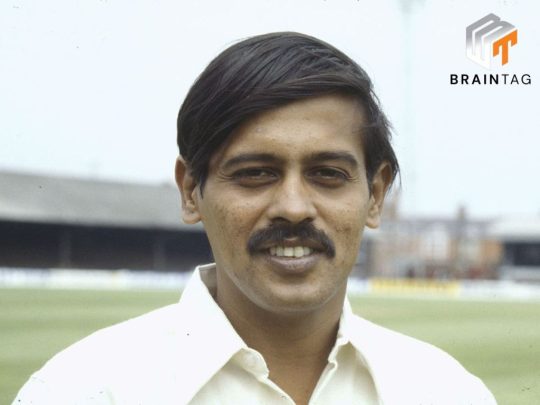
S Venkataraghavan was the first Indian captain to lead the team in the World Cup. He captained the side in the 1975 and 1979 editions of the tournament. In 1975, India failed to progress beyond the group stage, but in 1979, they reached the second round before being knocked out. An off-spin bowler, he was one of the famed Indian quartet of spin bowlers in the 1970s (the others being Bhagwat Chandrasekhar, Bishan Singh Bedi, and Erapalli Prasanna). He was also a useful tail-end batsman and strong at close fielding. Venkat came on to the Test scene at the age of 20 when he was selected to play against the touring New Zealand side. By the end of the series, he had emerged as a world-class spinner, taking 12 wickets in the Delhi test that led India to victory. He was the vice-captain of the Indian team that toured the West Indies and England in 1970–71. India won both series. Venkat played an important role, claiming five wickets in the Trinidad Test and 13 wickets in the three Tests in England. He captained India in both the 1975 and 1979 World Cup competitions. He also led India in a four-Test series against England in 1979. In domestic cricket, he led South Zone and Tamil Nadu for over a decade. Venkat retired from first-class cricket in 1985. He became a cricket administrator and managed the Indian Test side. He was honored with the Padma Shri in 2003. Kapil Dev 1983, 1987
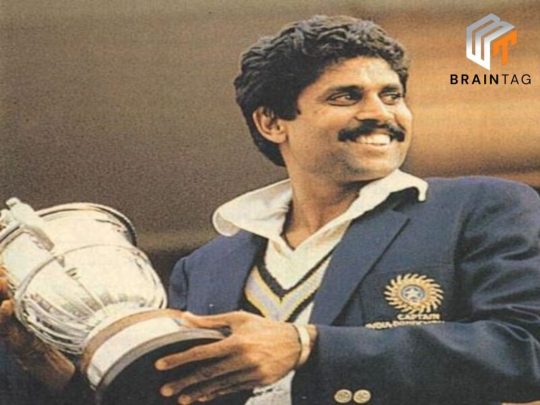
Kapil Dev is one of the most iconic Indian cricketers of all time, and he led India to its first-ever World Cup triumph in 1983. Under his captaincy, India stunned the cricketing world by beating the mighty West Indies in the final. Kapil Dev also captained India in the 1987 World Cup, but the team failed to progress beyond the semi-finals. Kapil Dev became the first Indian captain to win the Cricket World Cup and is still the youngest captain (at the age of 24) to win the World Cup for any team. He retired in 1994, at the time of holding the world record for the highest number of wickets taken in Test cricket, a record subsequently broken by Courtney Walsh in 2000. At the time, he was also India's highest wicket-taker in both major forms of cricket, Tests, and ODIs. He is the first player to take 200 ODI wickets. He is the only player in the history of cricket to have taken more than 400 wickets (434 wickets) and scored more than 5,000 runs in Tests, making him one of the greatest all-rounders in the history of cricket. Kapil Dev's all-around performance has been praised by cricketers including Sunil Gavaskar who regards him as one of the greatest all-rounders to play the game. He was the coach of the Indian national team between September 1999 and September 2000. On 11 March 2010, Kapil Dev was inducted into the ICC Cricket Hall of Fame. In 1982 awarded the Padma Shri and in 1991 the Padma Bhushan. M Azharuddin 1992, 1996, 1999

Mohammad Azharuddin was one of the most successful Indian captains in the World Cup. He led the team in three consecutive editions of the tournament - 1992, 1996, and 1999. India reached the semi-finals in 1996 and 1999 under his captaincy but failed to progress beyond the group stage in 1992. Azharuddin was known for his wristy strokeplay, much like Indian cricketer Gundappa Viswanath and Pakistani cricketer Zaheer Abbas. He made his debut for the Indian cricket team in Test cricket in 1984 against England at Eden Gardens in Kolkata on 31 December 1984, where he scored 110 in his first innings from 322 deliveries, alongside Ravi Shastri who scored 111, in what was ultimately a drawn match. He subsequently scored two more centuries in his next two Test matches. He scored 121 against England at Lord's in 1990. India was faced with the prospect of a follow-on when Azharuddin came in to bat at number five and scored his hundred off 88 balls in a losing cause. Former England cricketer Vic Marks called it "the most dazzling Test century" he had ever witnessed, in his column for The Observer. In the Second Test in Manchester, Azharuddin made 179 in reply to England's first-innings total of 519. Playing attacking cricket, he made 103 runs off 107 balls between lunch and tea on day three, while putting on a 112-run stand with Sachin Tendulkar. Playing his 39th Test, he reached his 10th Test century off 155 balls. The match ended in a draw. Azharuddin ended the series with 426 runs at 85.20. This tally was the highest by an Asian captain in a Test series in England until 2018 when it was broken by Virat Kohli. Sourav Ganguly 2003

Sourav Ganguly is one of the most successful Indian captains of all time, and he led the team to the final of the 2003 World Cup. India eventually lost to Australia in the final, but Ganguly's leadership played a key role in India's success in that tournament. Ganguly was awarded the Padma Shri in 2004. He was awarded with the Banga Bibhushan Award from the Government of West Bengal in 2013. Along with Harshavardhan Neotia, Sanjiv Goenka, and Utsav Parekh, Ganguly is also the co-owner of Atlético de Kolkata, a franchise of the Indian Super League, which won the inaugural season in 2014. He was also the brand ambassador of I-League side Mohammedan Sporting. Ganguly was elected as a president of the BCCI in 2019 and President of the editorial board with Wisden India. Before being elected as the President of BCCI, he was the President of the Cricket Association of Bengal, governing body for cricket in West Bengal, India. He is currently a part of the Supreme Court of India appointed Justice Mudgal Committee probe panel for the IPL Spot fixing and betting scandal's investigations. Rahul Dravid 2007

Rahul Dravid is one of the greatest batsmen to have ever played for India, and he also captained the team in the 2007 World Cup. India, however, had a disappointing campaign and was knocked out in the group stage. As of January 2022, Dravid is the fourth-highest run scorer in Test cricket, after Sachin Tendulkar, Ricky Ponting, and Jacques Kallis. In 2004, after completing his century against Bangladesh in Chittagong, he became the first player to score a century in all ten Test-playing countries (now 12). As of October 2012, he holds the record for the most catches taken by a player (non-wicket-keeper) in Test cricket, with 210. Dravid holds a unique record of never getting out for a Golden Duck in the 286 Test innings which he has played. He has faced 31258 balls, which is the highest number of balls faced by any player in test cricket. He has also spent 44152 minutes at the crease, which is the highest time spent on the crease by any player in test cricket. Dravid and Sachin Tendulkar are currently the highest-scoring partnership in Test cricket history having scored 6920 runs combined when batting together for India. MS Dhoni 2011, 2015
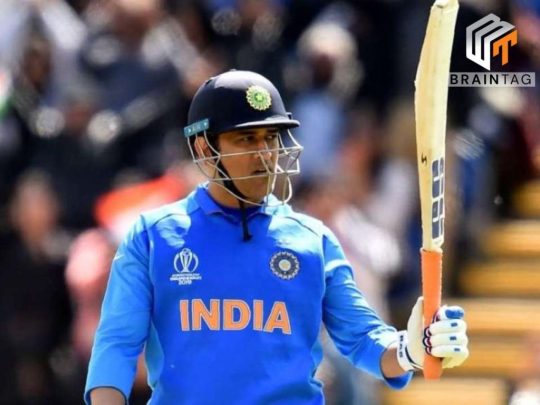
MS Dhoni is one of the most successful Indian captains of all time, and he led the team to World Cup glory in 2011. India beat Sri Lanka in the final to win their second World Cup title. Dhoni also captained India in the 2015 World Cup, but the team failed to progress beyond the semi-finals. Dhoni made his ODI debut on 23 December 2004, against Bangladesh in Chittagong, and played his first Test a year later against Sri Lanka. He played his first T20I also a year later against South Africa. In 2007, he took over the ODI captaincy from Rahul Dravid and he was also selected as T20I captain of India this year. In 2008, he was selected as Test captain. His captaincy record in the Tests format was mixed, successfully leading India to a series win against New Zealand in 2008 and the Border-Gavaskar Trophy (home series in 2010 and 2013) against Australia while losing to Sri Lanka, Australia, England, and South Africa by big margins in away conditions. Dhoni received India's highest sports honor, the Major Dhyanchand Khel Ratna Award in 2008 for his outstanding achievements and the Government of India honored him with India's fourth civilian award Padma Shri in 2009 and third civilian award Padma Bhushan in 2018. He is the only cricket captain in the world to win all three of the Cricket World Cup, ICC Men's T20 World Cup, and ICC Champions Trophy. Dhoni holds the honorary rank of Lieutenant Colonel in the Parachute Regiment of the Indian Territorial Army, it was presented to him by the Indian Army in 2011 for his service to the nation as a cricketer. Dhoni is considered one of the most popular crickets in the world. He is a leading brand endorser celebrity in India. Virat Kohli 2019
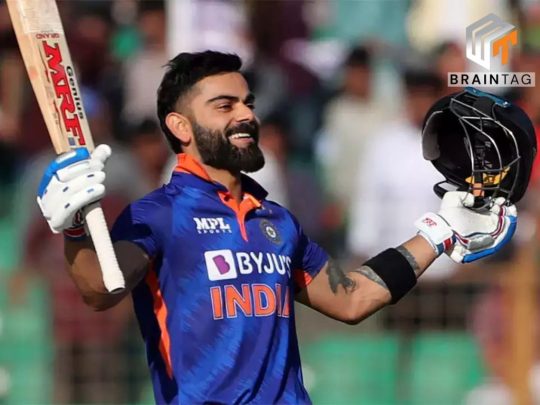
Virat Kohli led the team in the 2019 World Cup. India had a great campaign, finishing top of the group stage, but was knocked out in the semi-finals by New Zealand. He has received many accolades for his performances on the cricket field. He was recognized as the ICC ODI Player of the Year in 2012 and has won the Sir Garfield Sobers Trophy, given to the ICC Cricketer of the Year, on two occasions, in 2017 and 2018 respectively. Subsequently in 2012, Kohli was the highest run scorer in the 2012 Asia Cup at 357 runs. Kohli also won the ICC Test Player of the Year and ICC ODI Player of the Year awards in 2018, becoming the first player to win both awards in the same year. Additionally, he was named the Wisden Leading Cricketer in the World for three consecutive years, from 2016 to 2018. At the national level, Kohli was honored with the Arjuna Award in 2013, the Padma Shri under the sports category in 2017, and the Rajiv Gandhi Khel Ratna award, India's highest sporting honor, in 2018. In conclusion, the Indian cricket team has been blessed with some exceptional leaders over the years, and each of them has left their mark on the World Cup. The current captain, Virat Kohli, will be hoping to lead India to their third World Cup title in the upcoming tournament in 2023. To read more blogs - Click Here Read the full article
0 notes
Text
Winners of 68th Hyundai Filmfare Awards 2023
Lights, camera, action! The much-awaited 68th Hyundai Filmfare Awards 2023 was held recently, and the biggest stars of the Indian film industry came together to celebrate their achievements over the past year.
This annual award ceremony is one of the most prestigious events in the Indian entertainment industry and recognizes the best talent in Bollywood. From stunning performances to gripping storylines, the movies of 2022 left audiences captivated and entertained. So, without further ado, let's take a look at the list of winners of the 68th Hyundai Filmfare Awards 2023! BEST ACTOR IN A LEADING ROLE (MALE)
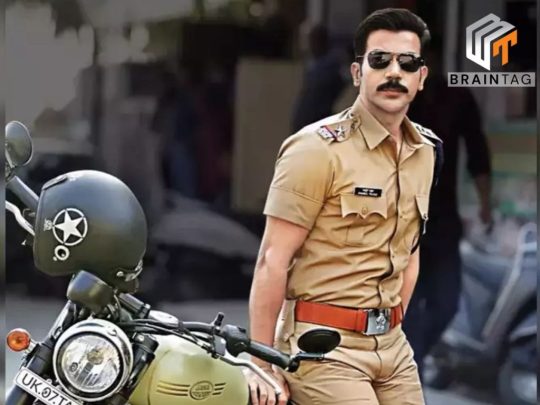
Rajkummar Rao for Badhaai Do BEST ACTOR IN A LEADING ROLE (FEMALE)

Alia Bhatt for Gangubai Kathiawadi BEST FILM
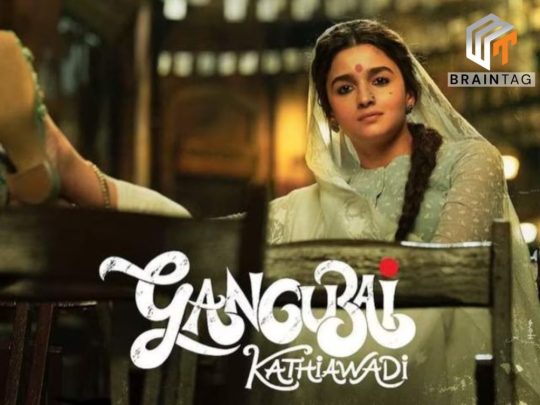
Gangubai Kathiawadi BEST FILM (CRITICS')

Badhaai Do BEST ACTOR (CRITICS')
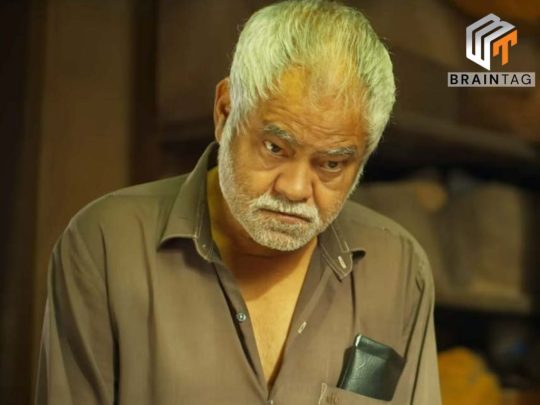
Sanjay Mishra for Vadh BEST ACTRESS (CRITICS')

Bhumi Pednekar for Badhaai do BEST ACTRESS (CRITICS')

Tabu for Bhool Bhulaiyaa 2 BEST DIRECTOR
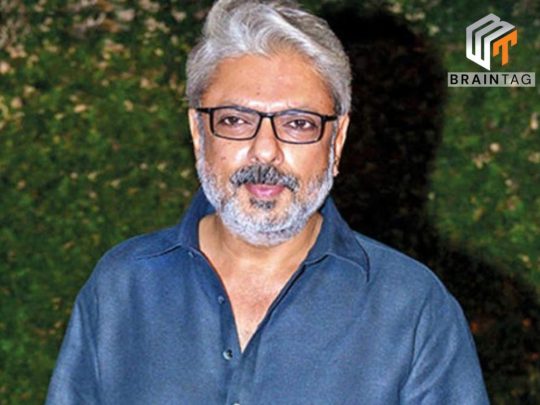
Sanjay Leela Bhansali for Gangubai Kathiawadi BEST ACTOR IN A SUPPORTING ROLE (MALE)
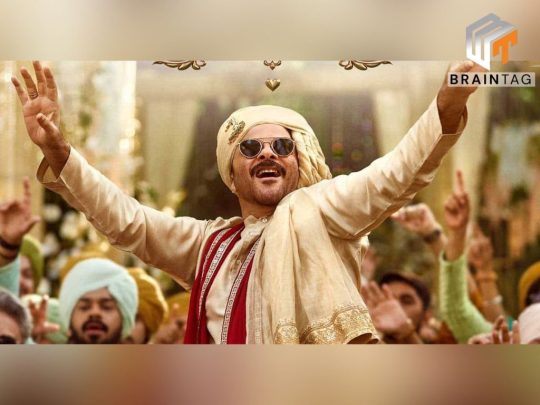
Anil Kapoor for Jugjugg Jeeyo BEST ACTOR IN A SUPPORTING ROLE (FEMALE)
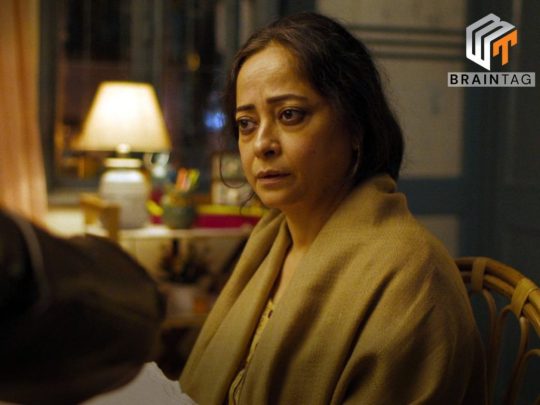
Sheeba Chaddha for Badhaai do BEST MUSIC ALBUM

Pritam Chakraborty for Brahmastra Part One: Shiva BEST LYRICS

Amitabh Bhattacharya for Kesariya (Brahmastra Part One: Shiva) BEST PLAYBACK SINGER (MALE)

Arijit Singh for Kesariya (Brahmastra Part One: Shiva) BEST PLAYBACK SINGER (FEMALE)

Kavita Seth for Rangisari (Jugjugg Jeeyo) BEST DEBUT DIRECTOR

Rajeev Barnwaland and Jaspal Singh Sandhu for Vadh BEST DEBUT MALE

Ankush Gedam for Jhund BEST DEBUT FEMALE

Andrea Kevichusa for Anek BEST DIALOGUE

Prakash Kapadia & Utkarshini Vashishtha for Gangubai Kathiawadi BEST SCREENPLAY

Akshat Ghildial, Suman Adhikary and Harshavardhan Kulkarni for Badhaai Do BEST STORY

Akshat Ghildial and Suman Adhikary for Badhaai Do BEST ACTION
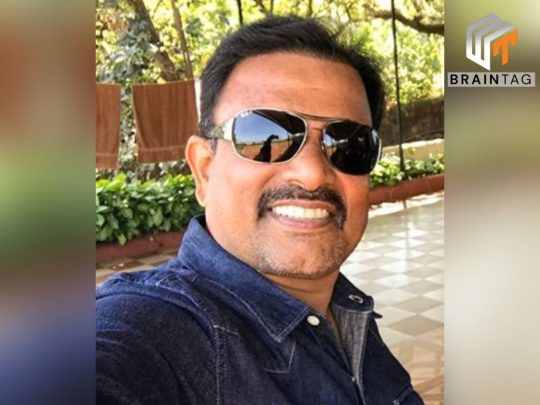
Parvez Shaikh for Vikram Vedha BEST BACKGROUND SCORE

Sanchit Balhara and Ankit Balhara for Gangubai Kathiawadi BEST CHOREOGRAPHY

Kruti Mahesh for Gangubai Kathiawadi BEST CINEMATOGRAPHY

Sudeep Chatterjee for Gangubai Kathiawadi BEST COSTUME

Sheetal Iqbal Sharma for Gangubai Kathiawadi BEST PRODUCTION DESIGN
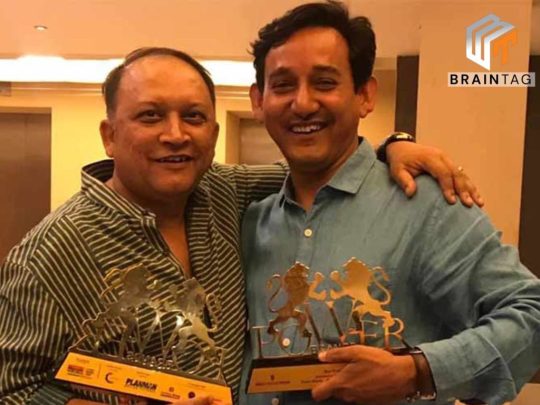
Subrata Chakraborty and Amit Ray for Gangubai Kathiawadi BEST EDITING

Ninad Khanolkar for An Action Hero BEST SOUND DESIGN
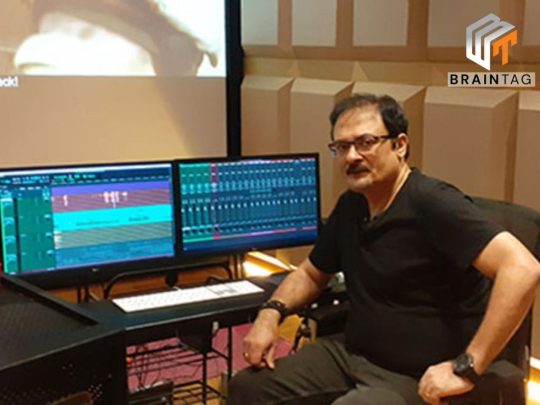
Bishwadeep Chatterjee for Brahmastra Part One: Shiva BEST VFX
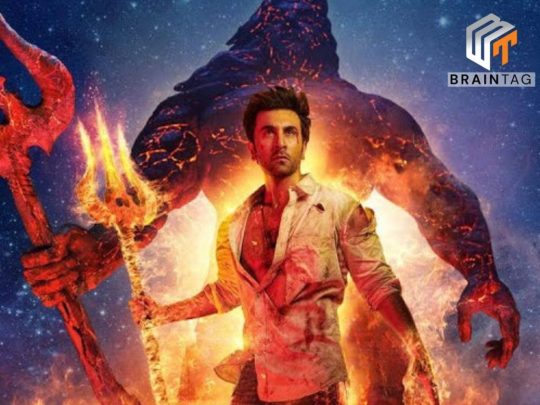
DNEG, Redefine for Brahmastra Part One: Shiva
Special Awards
LIFETIME ACHIEVEMENT AWARD

Prem Chopra R D BURMAN AWARD FOR UPCOMING MUSIC TALENT

Jahnvi Shrimankar for Dholida (Gangubai Kathiawadi) In conclusion, the 68th Hyundai Filmfare Awards 2023 was a night to remember, filled with glitz, glamour, and of course, deserving winners. The event celebrated the best of Indian cinema and recognized the hard work and dedication of actors, directors, writers, and technicians who brought their vision to life on the big screen. As always, the Filmfare Awards set a high benchmark for excellence in the film industry. Congratulations to all the winners of the 68th Hyundai Filmfare Awards 2023! To read more blogs – Click Here Read the full article
#68thfilmfareawards2023#68thhyundaifilmfareawards2023#68thhyundaifilmfareawards2023withmaharashtratourism#filmfareawards#filmfareawards2023#filmfareawards2023fullevent#filmfareawards2023fullshow#filmfareawards2023jioworldconventioncentre#filmfareawards2023live#filmfareawards2023livecoverage#filmfareawards2023liveupdates#filmfareawards2023nominations#filmfareawards2023salmankhan#filmfareawards2023winners
0 notes
Text
Top 7 places to visit in Sikkim
Sikkim is a beautiful state nestled in the foothills of the Himalayas in India. Sikkim is a must-visit location for anyone wishing to experience the best of the Himalayas.
It is known for its amazing scenery, colorful culture, and kind hospitality. Here are the top 7 Sikkim destinations you must see if you're thinking about visiting.
Gangtok Gangtok is the capital city of Sikkim and the hub of all activity in the state. It serves as the Gangtok District's administrative center. At a height of 1,650 m (5,410 ft), Gangtok is located in the eastern Himalayan range. The 100,000 residents of the city are from a variety of Sikkimese ethnic groups, including Indian Gorkhas, Bhutia, and Lepchas. Gangtok serves as the center of Sikkim's tourism sector and is located among the higher Himalayan ranges, where the climate is warm and temperate all year round. Gangtok is a must-visit location because of its humming markets, vibrant culture, and incredible views of the Himalayas. Many monasteries and temples can be found in the city, including the Rumtek Monastery and the Enchey Monastery, both of which are significant religious sites. Tsomgo Lake Tsomgo Lake, also known as Tsongmo Lake or Changgu Lake, is a glacial lake in the East Sikkim district of the Indian state of Sikkim, some 40 kilometers (25 mi) from the capital Gangtok. Located at an elevation of 3,753 m (12,313 ft), the lake remains frozen during the winter season. The lake's surface reflects different colors with the change of seasons and is held in great reverence by the local Sikkimese people. Buddhist monks prognosticated after studying the changing colors of the lake. Tourist attractions at the lake site include joy rides on decorated yaks and mules where kiosks offer a variety of food and drinks. There is also a small Shiva temple on the bank of the lake. As the lake is located in a restricted area it is essential for all Indians visiting the area to obtain permits. In the case of foreign nationals special permit is essential. The lake is famous for its crystal-clear waters that change colors throughout the day and is bordered by snow-capped mountains. Nathula Nathula is a mountain pass in the Dongkya Range of the Himalayas between China's Yadong County in Tibet, and the Indian states of Sikkim and West Bengal in Bengal, South Asia. The pass, which rises to a height of 4,310 meters (14,140 feet), connects Gangtok and Kalimpong with the settlements in the lower Chumbi Valley. Winters in Nathula Pass bring a lot of snowfall. This region could experience temperatures as low as -25 degrees Celsius. If you really enjoy the snow, you can wear heavy wool clothing and explore Nathula Pass in the winter. The summer season, when the temperature hovers around 10 degrees Celsius, lasts from May to mid-November. Yumthang Valley The Yumthang Valley, also known as the Sikkim Valley of Flowers sanctuary, is a natural preserve in the North Sikkim district of Sikkim state in India that features a river, hot springs, yaks, and grazing pasture on undulating meadows. At a distance of 150 kilometers (93 miles) from the state capital Gangtok, it is located at an elevation of 3,564 meters (11,693 ft) above mean sea level. A trip to Yumthang Valley is never complete without taking a yak ride. Yumthang Chu and Puniya Chu, two nearby rivers with good fishing, are close by. And only 7-8 kilometers away lies the stunning Shingba Rhododendron Sanctuary, a 35 square km field home to over 38 distinct species of rhododendrons. A hiker's trail goes to a little bridge that crosses over to the Yumthang Hot Spring on the way to the Yumthang Valley. What is surprising about this location is that the water coming from there stays warm even during the coldest temperatures. Additionally, due to the high sulphur content, it is thought to have medicinal value for healing. In addition to the hot spring, there is a very well-known Shiva Temple about 7 km to the north. Another extremely well-liked trekking location is Zero Point, which is about 23 km from the Yumthang valley at an elevation of approximately 15,000 ft, not far from the Chinese border. Its outstanding visual appeal and unimpeded view of the snowy peaks make it extremely appealing to hikers. Pelling Pelling is a mountainous town in Sikkim, India's Gyalshing district. Pelling is tucked away at a height of 2,150 meters (7,200 feet). The settlement lies 10 kilometers from Gyalshing City, the district's administrative center, and 131 kilometers from Gangtok. The two towns are linked by a frequent bus service. However, due to the increase in visitors, the area is changing, with the construction of hotels and repairs to the roads. At an altitude of 2000 meters, Pelling experiences summer temperatures as high as 25 degrees Celsius and winter temperatures as low as 1 degree Celsius. In the summer, it is quite warm and comfortable. July through September is when the monsoons occur. Pelling can be visited throughout the year, however, it is advisable to stay away from a trip during the monsoon seas Lachung Lachung is a town and hill station in northeast Sikkim, India. It is situated close to the Tibet border in the North Sikkim district. Lachung is located at the junction of the Lachen and Lachung Rivers, both of which are tributaries of the River Teesta and is at a height of approximately 9,600 feet (2,900 m). Lachung means "small pass" in Chinese. The town is located about 125 kilometers (78 miles) from Gangtok, the state's capital. Lachung is an offbeat destination, untampered by the hues of modernization. It is a popular destination amongst those that love time with nature. If you wish to explore the best of Sikkim, then a trip to Lachung is a must! This little town is filled with nature’s magnificence and glory. Here, you can enjoy the peace and also indulge in activities that will get your adrenaline rushing. Rumtek Monastery Rumtek Monastery, also known as the Dharma Chakra Centre, is a gompa that can be found in the Indian state of Sikkim, close to the state's capital Gangtok. The 16th Karmapa officially opened in 1966 as the Gyalwang Karmapa's seat-in-exile. The issue surrounding the 17th Karmapa is also a focal point for the sectarian conflicts that exist within the Karma Kagyu school of Tibetan Buddhism. Rumtek Monastery's weather is very similar to Gangtok City's because of its proximity. The optimum times to visit Rumtek Monastery are thought to be from March to June and from October to December because the summers and autumn months are nice. Avoid the monsoon, though, as the persistent rain might ruin your trip and make sightseeing challenging. In conclusion, Sikkim is a wonderful state with breathtaking scenery, a thriving culture, and kind people. Sikkim offers something for everyone, whether you want to get a close-up view of the Himalayan up close, learn about the regional culture and cuisine, or just relax and unwind in a peaceful environment. Therefore, be sure to include these top 7 locations in your itinerary if you're planning a trip to Sikkim. To read more blogs – Click Here Read the full article
#bestplacesinsikkim#bestplacestovisitinsikkim#placestoseeinsikkim#placestovisit#placestovisitindarjeelingandgangtok#placestovisitinnortheastindia#placestovisitinsikkim#placestovisitinsikkimgangtok#sikkim#sikkimbestplacestovisit#sikkimfamousplaces#sikkimplacestovisit#sikkimtouristplaces#top10placestovisitinsikkim#top7placestovisitingangtoksikkim#top7placestovisitinsikkim#topplacesinsikkim
0 notes
Text
7 National Park in Assam with district
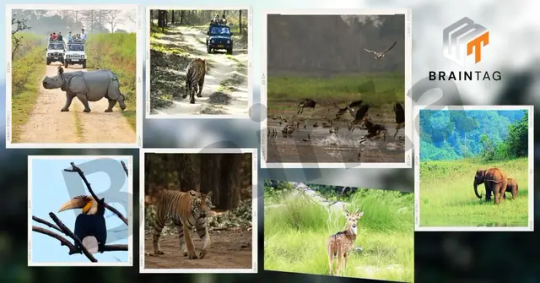
7 National Park in Assam with district details a haven for wildlife enthusiasts and nature lovers. India's northeastern state of Assam is renowned for its beautiful greenery, varied animals, and unique culture. Seven national parks, each with unique flora and wildlife, are located inside the state.
These national parks are dispersed throughout the state's several districts, giving wildlife enthusiasts and nature lovers plenty of chances to discover and take in Assam's natural beauty. In this article, we will delve into the details of the 7 National Parks in Assam with their respective districts.
Kaziranga National Park
Golaghat and Nagaon districts:
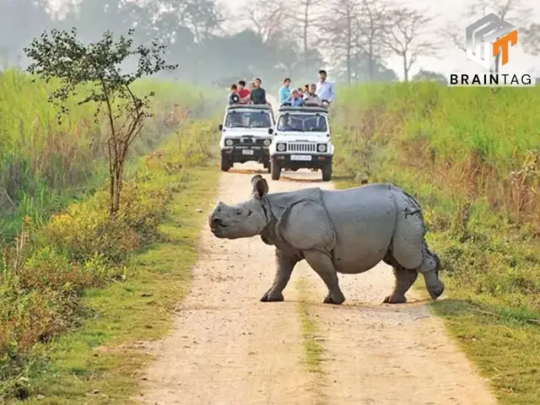
In the Assam districts of Golaghat and Nagaon is Kaziranga National Park, a UNESCO World Heritage Site. The Kaziranga National Park continues to be one of Assam's most well-known tourist destinations for both domestic and foreign visitors. Additionally, it is Assam's most well-known national park. The beautiful one-horned rhinoceros' greatest habitat is the reason for this. In Kaziranga National Park also supports large populations of tigers, elephants, wild buffalo, and swamp deer. More than 70% of the One Horned Rhinoceros in the world live in the Park. The country's highest concentration of tigers' prey, including their huge prey biomass, may be found. includes the only population of the Eastern Swamp Deer, more than 60% of India's wild buffalo, 7 different types of turtles, and tortoises. The other significant animals discovered include the following: the Leopard, Fishing Cat, other Lesser cats, Large Indian Civet, Small Indian Civet, Sambar, Barking deer, Hog deer, Gaur, Hog Badger, Hoolock Gibbon, Capped Langur, Assamese Macaque, Rhesus Macaque, Sloth Bear, Gangetic Dolphin, and Otter, many others. Best season for a visit: November to April Manas National Park Chirang and Baksa districts
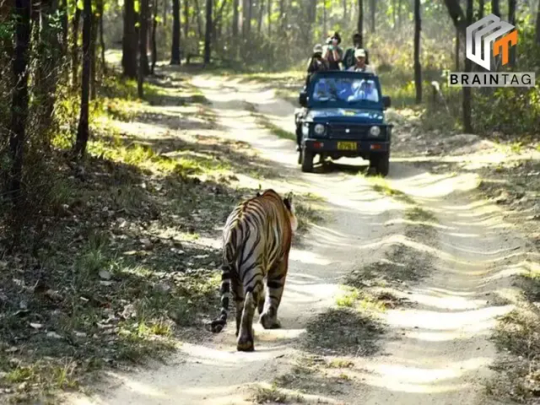
Manas, a wildlife reserve since 1928 that is now a tiger reserve, a world heritage site, and a biosphere reserve, is situated in the Himalayan foothill bhabar region of western Assam. With a 500 square kilometer size, it was designated as a national park in 1990. Additionally, it encompasses the majority of the 2600 sq. km. Chirang Ripu Elephant Reserve. More than 22 endangered species, which are protected to the maximum degree under Schedule 1 of the Wildlife Protection Act, are found in the park. The UNESCO World Heritage Declaration states that Manas comprises remarkable natural phenomena and areas of great natural beauty and artistic importance. Manas is well known for its distinctive visual beauty. With more than 500 different bird species, it is also recognized as an Important Bird Area. Best season for a visit: October to December and from mid-March to April. Dibru-Saikhowa National Park Dibrugarh and Tinsukia districts

It is a National Park as well as a Biosphere Reserve having an area of 340 sq. kms. in Tinsukia district. An unique habitat endemic to Dibru-Saikhowa only, a habitat which has undergone a radical transformation after the great earthquake of 1950. The migratory birds are a major attraction. During the peak season, tourists from around the world come to this location to see a variety of migratory birds. There are no roads in national parks. Most of your exploration will take place with the use of boat services designed specifically for tourists. While you enjoy taking photographs of magnificent wild animals like the Royal Bengal Tiger, Hoolock Gibbon, Leopards, and many more, you will have access to all the food and beverages you require. Best season for a visit: November to April. Nameri National Park Sonitpur district
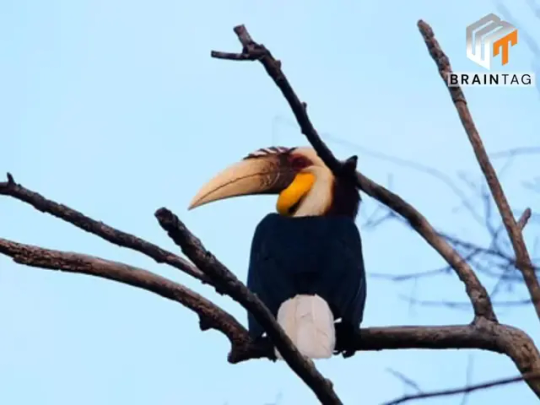
The Nameri National Park 200 sq. kms. area is located in the Sonitpur district, bordering Arunachal Pradesh and it is also the core area of the Nameri Tiger Reserve (344 Sq. Km.). One can enjoy rafting in the Jia Bhoroli river in the south-western boundary. Nameri National Park is located in the Sonitpur district of Assam and is known for its population of elephants, tigers, leopards, and other animals such as clouded leopards, Indian wild dogs, and hornbills. In this park, you may see animals like Binturong, Elephants, Barking deer, Hispid Hares, Sloth Bears, and Burmese Ferret Badgers, among others. The White-Winged Wood Duck, the Rufous-necked Hornbill, the Wreathed Hornbill, the Great Pied Hornbill, the Long-Billed Vulture, the Pit Viper, the Monitor Lizard, the Assam Roofed Turtle, the Indian Flap Shell Turtle, the Common Blind Snake, the Indian Cobra, the King Cobra, the Indian Softshell Turtle, the SouthEast Asian Leaf Turtle, the Myanmarese Python, and many others. Best season for a visit: November to April. Orang National Park Darrang district
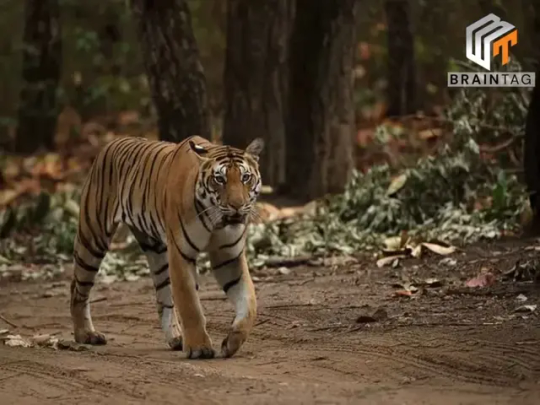
Orang National Park is located in the Darrang district of Assam and is known for its population of rhinoceroses, elephants, tigers, and other animals such as pygmy hogs, leopards, and fishing cats. The park is also home to numerous species of birds, making it a popular spot for birdwatchers. It covers an area of 79.28 km2 (30.61 sq mi). On April 13, 1999, it was declared a national park after being established as a sanctuary in 1985. The Bengal tiger, Asian elephant, big Indian rhinoceros, pygmy hog, and wild water buffalo are among the diverse flora and animals that may be found there. It is the only stronghold of the rhinoceros on the north bank of the Brahmaputra. Best season for a visit: November to April. Raimona National Park Kokrajhar district
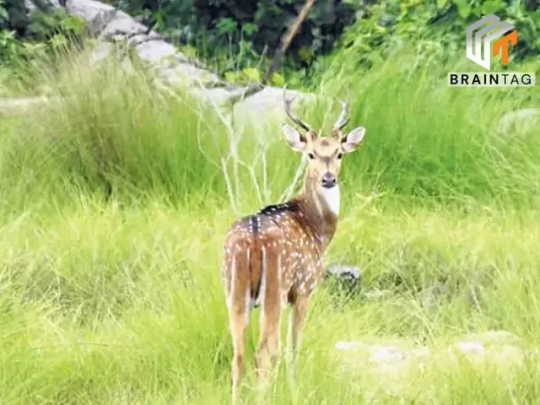
The most western region of Assam, India, is where Raimona National Park is situated. It is dispersed throughout the subdivisions of Gossaigaon and Kokrajhar in the Kokrajhar district of BTR. On June 5 of last year, 2021, the Raimona National Park was designated as the 6th national park in Assam. It is a part of the Assam Bodoland Territorial Council. The region's overall area is about 422 sq km. The presence of the Golden Langur, an endangered species of primates, is the park's principal draw. More than 100 types of butterflies, orchids, and birds live there, along with other wild animals like Bengal tigers, wild elephants, Asiatic wild water buffaloes, and more. Dehing Patkai Wildlife Sanctuary Dibrugarh and Tinsukia districts
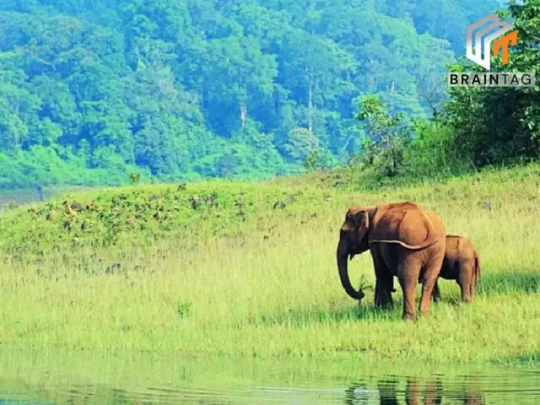
The National Park, which covers an area of 111.19 square kilometers and is known for its Assam Valley Tropical Wet Evergreen Forests bordering Arunachal Pradesh, is situated in the districts of Dibrugarh and Tinsukia. It is known for its population of elephants, tigers, leopards, and other animals such as clouded leopards, hoolock gibbons, and numerous species of birds. The sanctuary is also home to the Dehing river, which is popular for river rafting. The Park is a part of the Dehing-Patkai Elephant Reserve having the World War II cemeteries nearby, along with the Stillwell Road and the oldest refinery of Asia in Digboi and 'open cast' coal mining at Lido. Best season for a visit: September to March. In conclusion, Assam's seven national parks are a testimony to the state's natural and cultural heritage. Each of these parks has a special charm and offers plenty of chances for those interested in nature and wildlife to discover and enjoy the various flora and fauna of the state. Assam's national parks provide a wide variety of wildlife experiences, from the one-horned rhinoceroses of Kaziranga to the feral horses of Dibru-Saikhowa. To experience nature's beauty at its finest, visit these national parks if you ever decide to travel to Assam. To read more blogs – Click Here Read the full article
#assamnationalpark#assamnationalparkandwildlifesanctuary#assamnationalparks#kaziranganationalpark#majornationalparksofassam#manasnationalpark#namerinationalpark#nationalparkinassam#nationalparkinassamwithdistrict#nationalparkinassamwithdistrictwise#nationalparkofassam#nationalparks#nationalparksinassam#nationalparksinassampdf#nationalparksofassam#nationalparksofassamdetails#orangnationalpark
1 note
·
View note